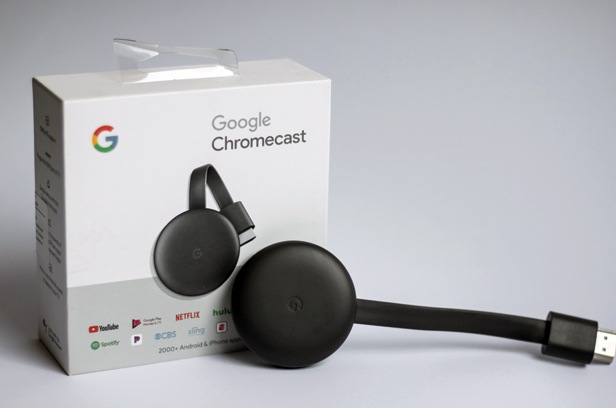Sustainability June 13, 2024
Google Pledges Plastic-Free Packaging by 2025, Shares Guide for Others To Follow
Tech brands like Google and HP are turning to paper products to make their packaging more sustainable.
Google announced this week that its packaging will be totally plastic-free by 2025 for all products, starting with the box for its Pixel 8 smartphone.
The announcement included a 69-page document called the Plastic-Free Packaging Design Guide, where the company outlined the issues that plastics pose to the environment, the demand for environmental packaging solutions and alternative materials, and went into how it would work to solve the issue by removing plastic from its own packaging.
![]()
“Product packaging traditionally relies heavily on mixed material formats, particularly those incorporating plastic,” the document says. “This poses a significant recycling challenge and creates a significant waste stream if it isn’t accepted for recycling. In response, Google has researched solutions that prioritize both sustainability and performance.”
Google defines “plastics” in the document as “a material which contains as an essential ingredient a high polymer and which, at some stage in its processing into finished products, can be shaped by flow,” meaning that Google does not include adhesive or inks in the exclusion of plastics, but specified that it does consider them in overall recyclability testing.
The goals of the initiative are to: increase recyclability; minimize waste; remove design features that some users might have trouble with, like holes, lifts and tabs; and maintain the packaging’s protective properties to keep products from being damaged before use.
In regard to the actual materials Google plans to use, it outlines plastic alternatives including molded fiber, greyboard and corrugated paper.
“Materials like paper and cardboard offer a compelling alternative to conventional plastics; they are renewable but can also be made from recycled content,” the document states. “They break down easily and integrate into the vast majority of existing consumer-facing recycling streams. While this transition presents opportunities, it also introduces challenges. Fiber-based solutions must meet the functional requirements for product packaging, particularly the protective properties that previously made plastic so popular. This necessitates new designs, materials, production methods and supply chain adaptations.”

Small details in the unboxing experience and packaging design will be adapted to fit Google’s new standards, like replacing polypropylene adhesive protectors on the new-product screens, eliminating plastic tape in favor of paper tape, shifting to molded fiber trays instead of thermoformed plastic trays, creating molded fiber hang tabs for retail shelves, limiting shrink wrap and more.
For the printing process, Google is rolling out a six-phase qualification plan for potential packaging and print suppliers. This includes vetting coating and ink suppliers for compatibility, bend-resistance testing, G7 color management, laboratory testing for abrasion resistance and adhesion, box assembly monitoring to alleviate issues like deboss cracking or corner bunching, full assembly manufacturing simulation, and cosmetic testing to make sure the products withstand supply chain and user conditions.
Across the Pixel and Nest product categories, Google will use three types of boxes, as described in the document:
- Telescoping box. “This box type features an elegant and classic aesthetic with clean lines ideal for showcasing higher value products upon opening. A telescoping lid offers a simple opening and closing mechanism. Custom inserts and collars can be added for a tailored unboxing experience.”
- Roll end lock front box. “A versatile structure featuring a front panel with interlocking tabs for closure. The design offers a balance between protection, familiar opening and easy assembly. Can be designed to break down easily for more efficient recycling.”
- Tuck top box. “Simple, functional appearance featuring a top flap that tucks into the box that is easy to open and close. Highly cost-effective and widely used for smaller accessories and lower priced products offering basic protection and easy assembly.”
“Many companies have designed and engineered sustainable solutions for their products and services with impressive results, and we think it’s imperative that all companies do this,” Google says in the document. “We also recognize that the challenges in building a more sustainable future are numerous and difficult. If all companies have to solve similar problems independently, then our collective progress will be slower. That’s why we believe innovation in sustainability should be a collaborative endeavor, not a competitive one.”
In sharing the large guide with specific plans, Google’s hope is that other companies in the tech space and beyond opt for more green alternatives to their plastic packaging.
“We also hope that other companies will be inspired to share their insights, amplify their impact and ultimately bring about the change we collectively want,” the document states.
Just this week, HP announced that it will reduce polyethylene usage in its own packaging by 98% for its All-in-One PC packaging.
“It’s no longer just a fashionable thing to be sustainable,” HP packaging design and procurement manager Darrick Christensen told Packaging World. “Everyone wants to contribute to using sustainable materials and minimizing our negative impact on our world.”
HP also turned to recycled corrugated, paperboard, molded pulp and small amounts of recycled EPE foam when necessary for this development. Packaging World reported that the new packaging uses five grams of 100% recycled EPE, which is 98% less than in previous years.
To maximize the environmentalism of the packaging, though, HP had to redesign the computer hardware itself, redesigning the stand so it could detach from the monitor unit and lay flat in the packaging. That allowed for almost a 50% reduction in packaging size for the 24” model and 67% for the 27” model compared to previous-model packaging. By doing so, HP increased the product’s pallet density by 66% for the 24” model and 133% for the 27” model.
There aren’t many tech names bigger than Google and HP, which are also two of the biggest trend-drivers. Since these giants are not only adopting these techniques to minimize plastic in packaging or eliminate it all together, but also explaining step by step how they do it and providing alternatives, it’s only a matter of time until it’s more widespread throughout the tech sector and across retail overall.

Promo for the Planet is your destination for the latest news, biggest trends and best ideas to help build a more sustainable and socially-responsible industry.
